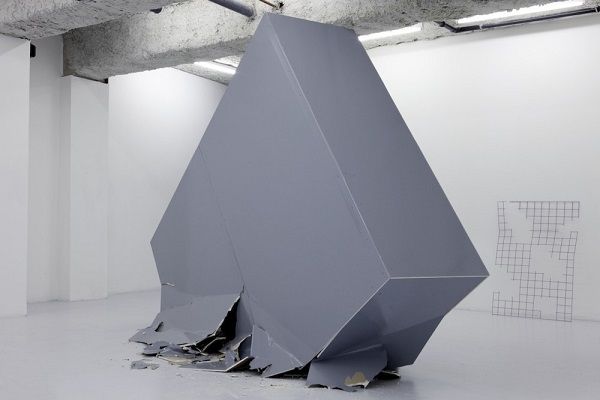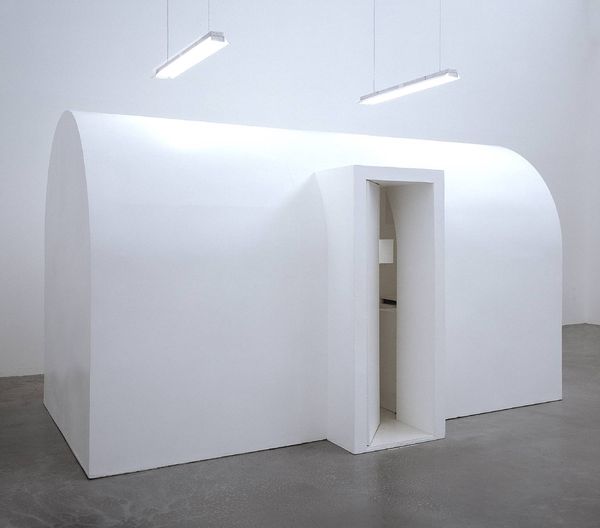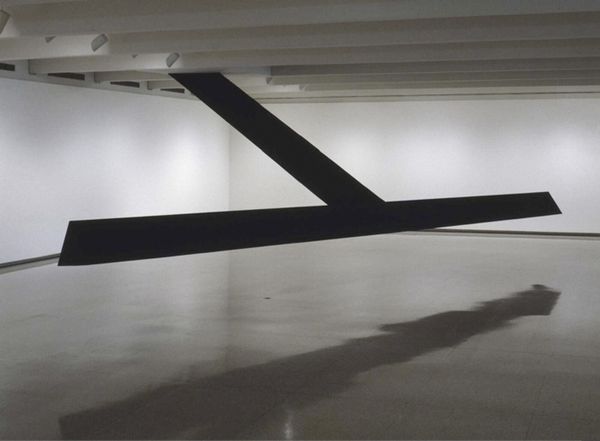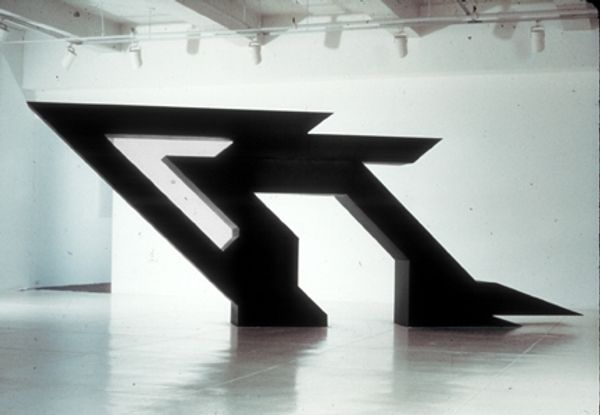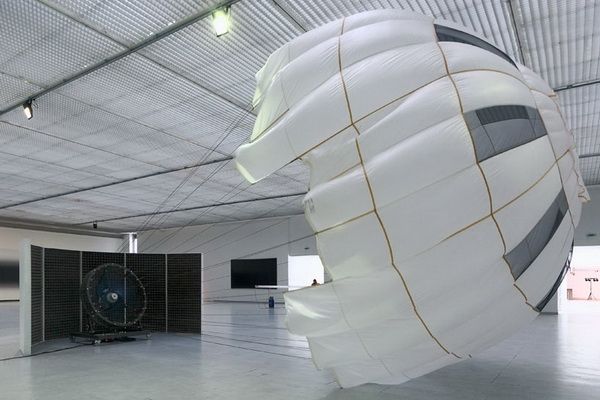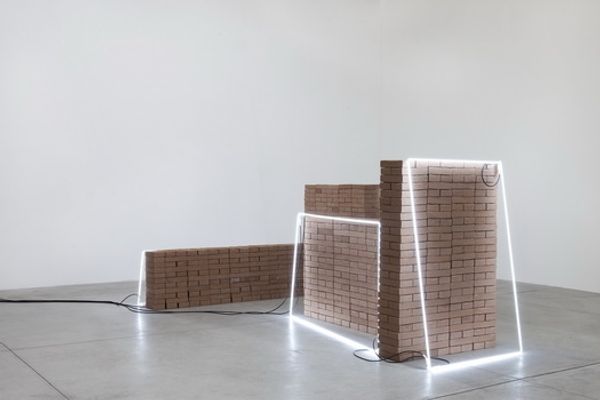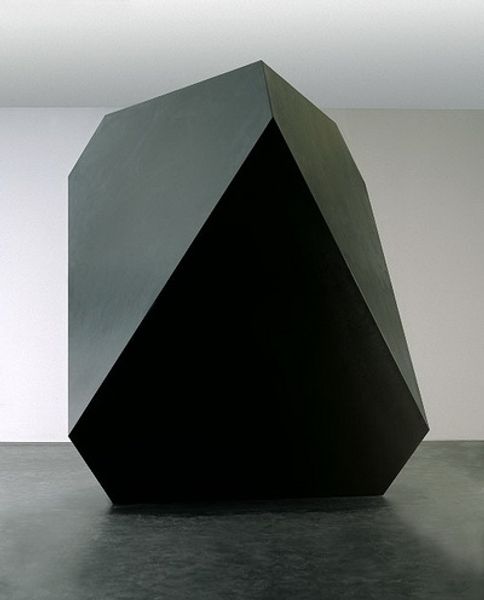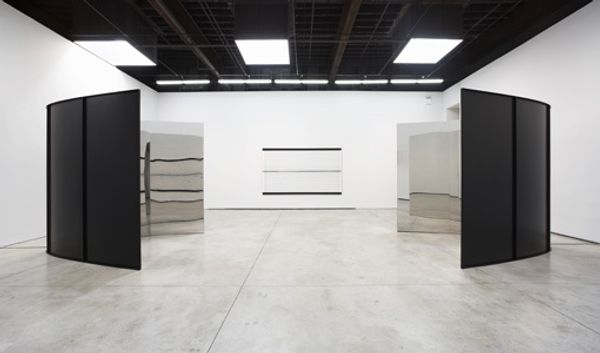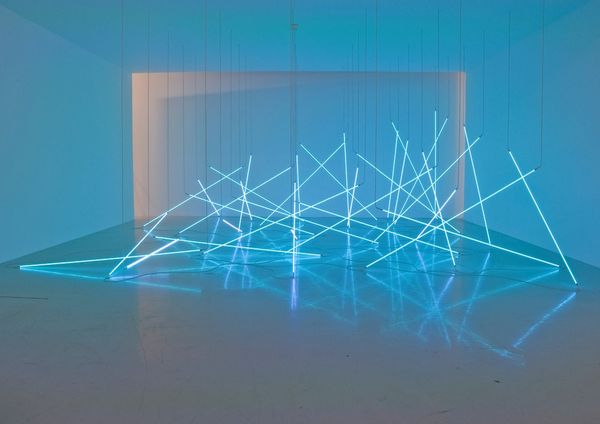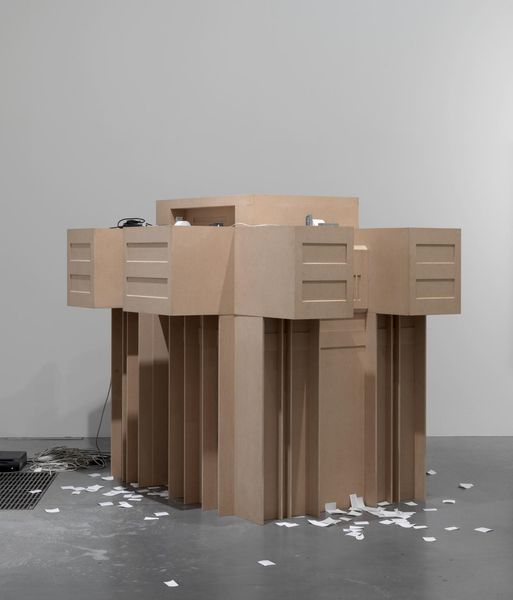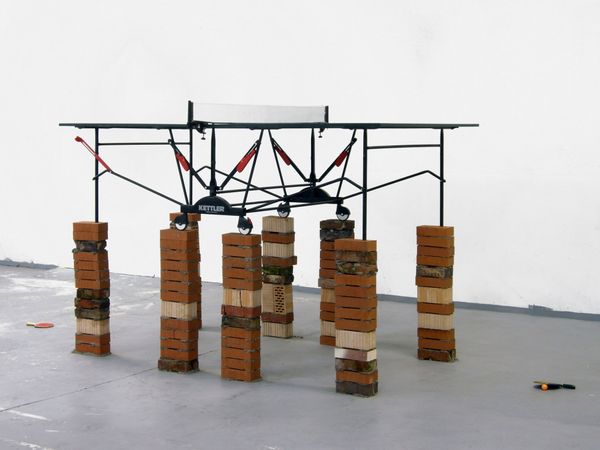
sculpture, installation-art
#
minimalism
#
geometric
#
sculpture
#
concrete
#
installation-art
#
abstraction
#
line
#
hard-edge-painting
Copyright: Ronald Bladen,Fair Use
Curator: My first thought: overwhelming. Editor: Precisely! What we're looking at is Ronald Bladen’s "The Cathedral Evening," an installation from 1971. It epitomizes Minimalist sculpture through geometric abstraction. Curator: A cathedral, though? It evokes something monolithic, ancient, maybe even spiritual, which I find unexpected within Minimalism's supposedly "pure" aesthetic. Is that ironic? Editor: The title is suggestive, certainly. The forms do mimic the upward thrust and shadowed recesses of cathedral architecture, hinting at a shared visual language used to express grandeur. The scale here emphasizes this: the artist creates this sensation using monumental sculpture. Curator: The interplay of light and shadow seems crucial, amplifying the visual drama of black and white geometric shapes. There's also something unsettling, I wonder about its hard edges within the history of abstraction? It has a brutal edge but it creates the possibility of another spiritual layer, it seems both stark and sacred at the same time. Editor: Indeed. And notice how it seems to occupy space—not just sit within it. That becomes its radical offering: to challenge traditional notions of art’s role. These monumental forms force the viewer to consider their physical presence. The materials - possibly painted concrete - suggest industrial and social themes. Curator: Considering that artistic movements rarely emerge in isolation, could you say the title then hints at an interest in reclaiming architectural or religious imagery for secular, or avant-garde purposes? To critique institutional grandiosity, perhaps? Editor: Exactly! The power dynamics inherent in visual representation are key. The work creates its own social space, dictating movement and perspective, much like an institution. Curator: That adds new levels to "pure form." After our discussion I am beginning to think of how it is not just formal exploration, but a visual argument about the place and purpose of art within societal frameworks. Editor: A fascinating glimpse, indeed. It reshapes how we perceive space and the stories it tells, even silently.
Comments
No comments
Be the first to comment and join the conversation on the ultimate creative platform.
